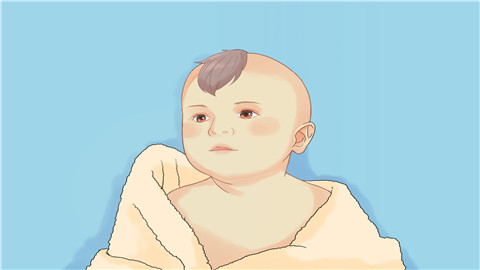What should I do if my baby has high jaundice?
Generally, high jaundice in infants may be caused by characteristics of neonatal bilirubin metabolism, insufficient breastfeeding, neonatal hemolytic disease, neonatal sepsis, biliary atresia, and other reasons. It is recommended to seek timely medical consultation, identify the cause, and improve the condition under a doctor's guidance through general treatments, medication, surgical treatments, etc. Detailed analysis is as follows:

1. Neonatal bilirubin metabolism characteristics: After birth, infants experience excessive red blood cell breakdown and weak liver metabolism, leading to increased bilirubin production and reduced excretion, which results in physiological jaundice manifested as yellowish skin. Ensure adequate feeding so the baby consumes more milk and passes more stools to promote bilirubin excretion. When weather permits, expose the baby to sunlight appropriately for 10-15 minutes each time to help reduce bilirubin levels.
2. Insufficient breastfeeding: Inadequate breast milk intake leads to reduced bowel movements and increased enterohepatic circulation of bilirubin, causing persistent jaundice accompanied by slow weight gain. Increase the frequency of breastfeeding to every 2-3 hours, ensuring the baby is well-fed. If necessary, supplement with formula milk under a doctor's guidance to promote bowel movements and reduce bilirubin reabsorption.
3. Neonatal hemolytic disease: Blood type incompatibility between mother and infant causes hemolysis, releasing large amounts of bilirubin and resulting in severe jaundice, accompanied by anemia and enlarged liver or spleen. Patients should follow medical advice and receive medications such as human serum albumin, intravenous immunoglobulin, and phenobarbital sodium injection for treatment.
4. Neonatal sepsis: Bacterial infection leads to sepsis, affecting bilirubin metabolism and causing high jaundice, accompanied by fever and poor feeding. Patients should follow medical advice and use antibiotics such as ampicillin sodium injection, cefotaxime sodium injection, and penicillin sodium injection to fight infection. Jaundice usually gradually subsides after the infection is controlled.
5. Biliary atresia: Abnormal bile duct development obstructs bile drainage, causing bilirubin to flow back into the bloodstream, resulting in high jaundice levels and grayish-white stools. Early Kasai surgery is required to reconstruct the bile drainage pathway. Postoperative care should focus on preventing infections, promoting bile drainage, and reducing bilirubin levels.
In daily care, closely observe changes in the infant's skin jaundice and mental status, provide feeding on demand to ensure adequate nutrition, and maintain skin cleanliness. Through scientific nursing and standardized treatment, help the baby reduce bilirubin levels, promote jaundice resolution, and ensure healthy growth.







